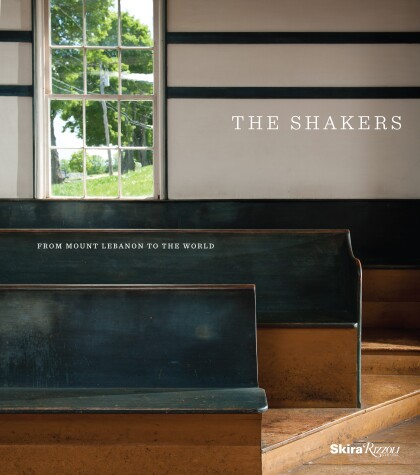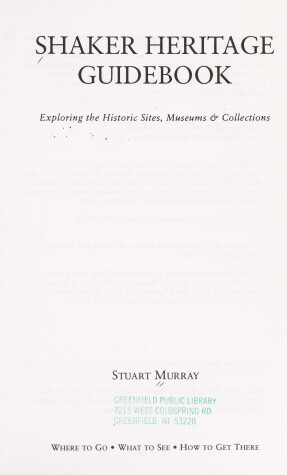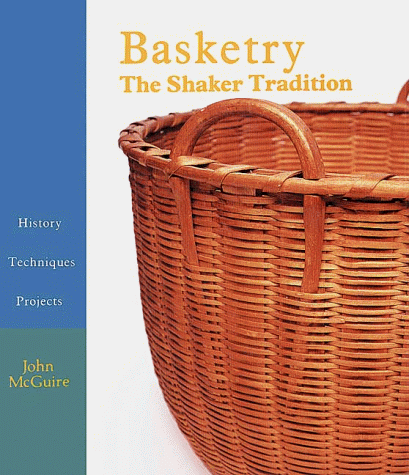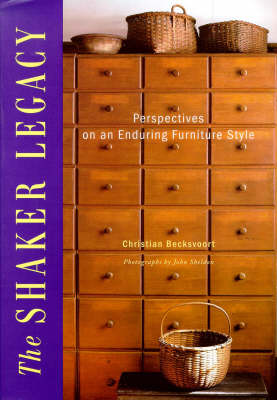Don't Let My Name SCARE YOU! Expose of An African Prince Born in America
by Abdul Rahman and Fumi Hancock
This major new book with essays by prominent scholars presents the austere and simply styled objects of the Shakers in context of their faith and community at Mt. Lebanon, N.Y., the spiritual centre of the Shaker world. Outstanding examples of furniture, textiles, tools, machinery, books, drawings, ephemera and other objects, as well as historic images and new photography of the rooms and landscapes of various Shaker sites, bring the rich world of the Shakers to life. The materials were drawn pr...
The first biography of Ann Lee, founder of the American Shaker movement and female Messiah. From humble origins in 18th century Manchester, Ann Lee (or Mother as she liked to be known) became the visionary religious leader of a community of the faithful in America. In 1773 Ann Lee left the Manchester House of Correction where she had starved and been deprived of sleep for 14 days. In that time she claimed that, in a vision, God told her that she was the Messiah. She set forth to proclaim 'Ann t...
Sabbathday Lake, founded in 1794, is one of the 19 original Shaker sites in America. Whilst all the other sites are now just historical re-creations, this small hamlet in Maine continues to thrive as a vital centre for the Shaker faith in the 21st century. "A Place in Time" is a stunning collection of photographs by renowned photographer Stephen Williams, who has been visiting the community since the early 1970's. He draws artistic inspiration from their quest for harmony, economy, and perfectio...
An Early View of the Shakers: Benson John Lossing and the Harper's Article
Shakers (Perspectives on History (Discovery))
The Shakers are known for self-denial and austerity in everyday living and their material world, as embodied by the heavenly simplicity and purity of their chairs and blanket chests. Yet the believers also enjoyed a diversity of visual pleasures, from flowers, sunSets, rainbows, and the northern lights as seen at home to waterfalls, ocean waves, and dramatic cliffs viewed while traveling across America.In Shaker Vision, Joseph Manca explores original texts, especially diaries and travel journals...
Dozens of beautiful photos, both vintage and contemporary, draw us into the fascinating world of Shaker communities’ accomplishments, their progressive views, and their still-resonating impact on American life. This book focuses specifically on two Shaker villages, Hancock and Mount Lebanon, which were close neighbors situated on either side of the Taconic Mountain Range bordering New York and Massachusetts. Mount Lebanon was the vibrant voice of Shakerism for over 160 years while Hancock lived...
Take your pick from dozens of different traditional Shaker styles: Cats Head, Spoon, Personal Carrier, Double Bottom and many more. Easy-to-follow instructions and over 300 close-up photos, plus 24 pages of full-color examples.
Locating the Shakers (Exeter studies in American & Commonwealth arts, No 3)
Since the late eighteenth century, Shakers have exerted an influence on our nation wholly disproportionate to the size of their communities. Their approach has helped shape everything from craftsmanship and ingenuity to concepts of communal living and work ethic. And while much of our modern-day fascination with the United Society of Shakers centers upon their unique attention to craftsmanship, the innovative spirit they brought to simple, Godly living is indeed the most timeless aspect of thei...
The Shakers sought to create a heaven on earth through a combination of worship and diligent work, and their handicrafts are among our greatest exemplars of form following function. Practical yet attractive, the furniture, textiles, tools and machinery of the Shakers are utterly distinctive and became famous the world over during the twentieth century, with certain Modernist architects and designers finding unexpected common ground with this decidedly non-Modernist sect. 'Shaker Handicraft' - th...
This is a photo gallery of 150 Shaker pieces, many seen here for the first time. It gives insights on Shaker design and a detailed historical and design notes on each piece.'


















